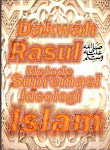Plan Business Strategic Market Planning Marketing Define Objective Management
Strategic Marketing Planning
Introduction
As noted in the Preface, the primary objective of this book is to reinforce understanding of the key concepts and ideas covered by formal courses in marketing strategy and management. Its content and structure will also be useful to practitioners as an aide-memoire or checklist covering the basic steps involved in developing an operational marketing plan.
In this chapter we open with a short overview of the nature and purposes of strategic marketing planning (SMP) and a fuller statement of objectives. Next, we describe the structure of the book and the organizing principles which determined this. Specifically, we identify a number of key questions which the planner/decision maker must address and answer in developing an effective marketing strategy and plan for its implementation. Each of these key questions is the subject of a chapter which contains narrative, to remind the reader of salient issues and topics, and a series of exercises or assignments which require application of knowledge (and experience) to produce a useful solution.
Having described the structure and sequence to be followed, we conclude with some advice on how to use the book to best effect. This includes completion of the exercises themselves, interpretation of the answers provided, and the role of the Barnstaple Company case study as an example of the implementation of the exercises to produce a new strategy and operational marketing plan for a small company experiencing declining profitability.
As noted in Marketing Strategy and Management (Baker, 1992), there is no single, universally accepted definition of Strategic Marketing Planning - SMP. Seven definitions identified by Brownlie (1983) in a survey of the subject are cited:
The answers to two questions implicit in Drucker’s early conceptualization of an organization’s strategy: ’What is our business! And what should it be?’
Chandler defined strategy as: ‘the determination of the basic long-term goals and objectives of an enterprise, and the adoption of courses of action and the allocation of resources necessary for carrying out these goals’.
Andrews’ definition of strategy combines the ideas of Drucker and Chandler: ‘Strategy is the pattern of objectives, purposes or goals and plans for achieving these goals, stated in such a way as to define what business the company is in or is to be in and the kind of company it is or is to be’.
Hofer and Schendel define an organization’s strategy as: ‘the fundamental pattern of present and planned resource deployments and environmental interactions that indicates how the organization will achieve its objectives’.
According to Abell, strategic planning involves: ‘the management of any business unit in the dual tasks of anticipating and responding to changes which affect the marketplace for their products’.
In 1979, Derek Wynne-Jones, head of the planning and strategy division of PA. Management Consultants, considered that strategic planning: ‘embraced the overall objective of an organization in defining its strategy and preparing and subsequently implementing its detailed plans’.
Christopher Lorenz, late editor of the management page of the financial Times, considered strategic planning to be: ‘the process by which top and senior executives decide, direct, delegate and control the generation and allocation of resources within a company’.
But, while these definitions may differ in the particular, there does appear to be a common thread, which is that Strategic Marketing Planning - SMP is concerned with establishing the goal or purpose of an organization and the means chosen for achieving that goal. Perhaps, then, the differences of opinion revolve around how one defines an organization or ‘business’. We must recognize that differences of size, scale, diversity, complexity, etc. will inevitably result in significant differences between ’firms’ and so make generalizations about them difficult if not impossible.
To overcome or reduce this difficulty most analysts now prefer to define the business in terms of its strategic functions rather than try to define businesses first and then discover that there are major discrepancies in strategic functions between them. As a consequence, most discussions of Strategic Marketing Planning - SMP are now focused upon the concept of the strategic business unit (SBU) which has been defined succinctly by Arthur D. Little as:
A Strategic Business Unit - or Strategy Centre - is a business area with an external market place for goods and services, for which management can determine objectives and execute strategies independent of other business areas. It is a business that could probably stand alone if divested. Strategic Business Units are the ‘natural’ or homogeneous business of a corporation.
The Marketing Manual





